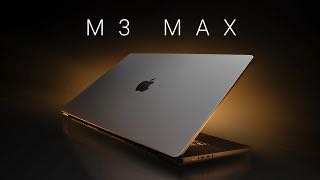6 min to read
Apple MacBook Air 15 (base) - A Long Term User Review
Original video published on Sep 6, 2023

Switching to MacBook Air 15

After a year and eight months of extensive use, I’m transitioning from the 2021 MacBook Pro with the M1 Pro chip, my primary workhorse, to the new 15-inch MacBook Air with the M2 chip. This might raise questions, especially considering the potential performance downgrade from the M1 Pro to the M2 base model.

However, with my editing setup now shifted to the Mac Studio with the M2 Ultra chip, my reliance on the MacBook Pro for heavy tasks has reduced. This switch to the MacBook Air is an exploration of its capabilities as a purely productivity-focused device.

Storage Limitations

Transitioning from a 1TB MacBook Pro to the base MacBook Air with only a 256GB SSD highlighted a significant storage shortfall, especially for heavy-duty tasks. Although sufficient for light activities like emails and scripting, the limited storage is a stark contrast to Windows laptops at similar price points, like the Dell XPS 15 and Lenovo Slim 7, which offer 1TB SSDs. This discrepancy raises questions about the adequacy of Apple’s base storage in 2023 and suggests a need for Apple to reconsider their base storage offerings in future models.

Design and Build Quality

After three months with the MacBook Air 15, its design feels like an expanded version of the 13-inch Air, but with a 15-inch display and a slightly larger battery. The laptop maintains its ultra-thin profile, measuring just 0.45 inches thin, and remains one of the lightest 15-inch laptops I’ve encountered.

- MacBook Weight Comparison
| MacBook Pro 16 | MacBook Air 15 | MacBook Air 13 |
|---|---|---|
| 4.7 lbs | 3.3 lbs | 2.7 lbs |
Screen Size Matters

The transition from a 16-inch MacBook Pro to the 15-inch Air was seamless, thanks to the larger screen size, which enhances productivity and content consumption. The display, while lacking ProMotion, is bright and sharp, making it suitable for everyday tasks and light creative work. The webcam quality on the MacBook Air 15 is impressive, comparable to the Pro models.
Audio Experience


The speaker system on the MacBook Air 15 includes six speakers, two more than the 13-inch Air, resulting in a deeper and more immersive audio experience. While it doesn’t match the audio quality of the front-facing speakers on the MacBook Pro models, it’s impressive for a laptop of its size and build.
Keyboard and Trackpad

The MacBook Air 15 features the same sleek keyboard layout found across all MacBooks, with responsive keys and bright LED backlighting. The large, smooth trackpad enhances the user experience, especially when using gesture controls.
Portability and Connectivity

The MacBook Air 15 offers limited ports, necessitating the use of dongles for connectivity.

While this is a compromise due to its thin design, it does include MagSafe charging and a 35-watt dual-port adapter, adding convenience.
Battery Life

The larger battery in the 15-inch Air significantly extends screen-on time. In comparison to the 16-inch MacBook Pro and even the 13-inch Air, the 15-inch Air offers impressive battery life, a testament to the M2 chip’s power efficiency.
Performance Insights

The MacBook Air 15, sharing the same M2 chip as the 13-inch model, including an 8-core CPU and a 10-core GPU, delivers robust performance for everyday tasks such as emailing and video streaming. However, its 8GB of unified memory, shared between the CPU and GPU, can be limiting for heavy users, especially evident when managing over 50 browser tabs or using memory-intensive applications like Lightroom.

These tasks reveal some performance lags, suggesting that for more demanding usage, opting for a 16GB or 24GB variant would be wise. It’s important to note, though, that upgrades are not user-serviceable due to Apple’s design of soldering components onto the motherboard.


In benchmark testing, the MacBook Air 15 surprisingly outperformed the 13-inch model in both multi-core and single-core tasks, despite sharing the same M2 chip. This improvement was evident in Cinemax R23 tests and further confirmed by Blender tests, where the 15-inch model saved nearly three minutes in rendering time.

The reason behind this enhanced performance appears to be the larger chassis of the 15-inch model, which allows for more efficient passive cooling, leading to lower temperatures and higher clock speeds.

However, this performance boost is somewhat constrained by the 256GB SSD, limiting the laptop’s capabilities in applications like Lightroom that require extensive data writing. This bottleneck becomes more apparent when compared to the 1TB SSD in the 13-inch model.

The 15-inch MacBook Air excels in portability, battery life, and basic productivity tasks. However, the base model’s storage limitation is a significant downside, making it less suitable for users with heavy storage needs. For those requiring more power, refurbished or higher-spec MacBook Pro models might offer better value.
In conclusion, while the MacBook Air 15 base model excels in certain areas, its limitations necessitate careful consideration of your specific needs and usage patterns.





Comments